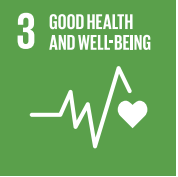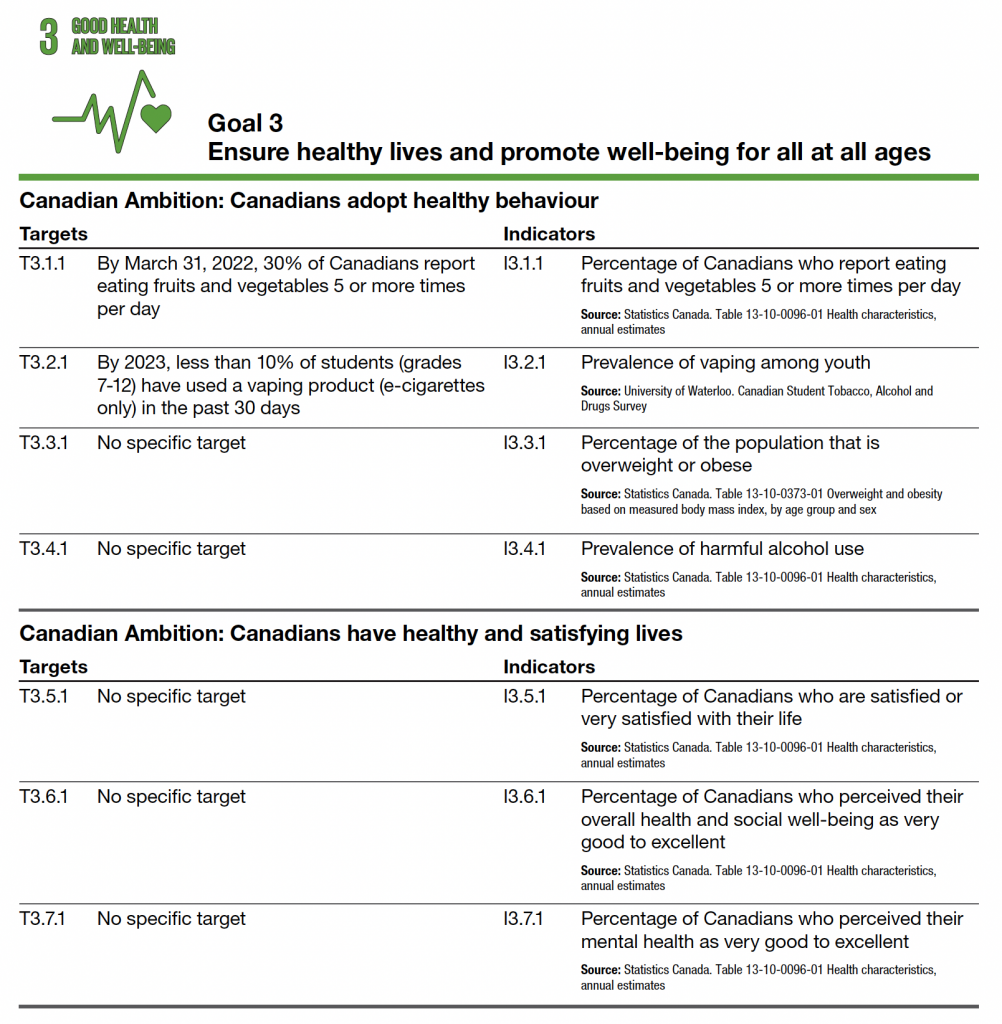Week 3
SDG #3 – Good Health and Well-being

Video
In this 12-minute video made available from the SDG Academy, Jeffrey Sachs looks at SDG #3 – Good Health and Well-being. He discusses the many dimensions of achieving this SDG including access to universal health care and an integrated health system. He also discusses social determinants of health, such as rising opioid and obesity epidemics due to poorly regulated industry.
Analysis
Ensuring healthy lives and promoting well-being at all ages is essential to sustainable development. Good physical and mental health is essential for individual well-being, supports equality, enables inclusive and sustainable growth, efficient labour markets, and enables robust community participation and engagement. By achieving good health for all, societies can be more peaceful, inclusive, and more prosperous[1]. In 2017, only around one third to half of the global population was covered by essential health services. If current trends continue, only 39% to 63% of the global population will be covered by essential health services by 2030[2].
Before the COVID-19 pandemic, major progress was made in improving the health of millions of people. Significant strides were made in increasing life expectancy and reducing some of the common killers associated with child and maternal mortality. But more efforts are needed to fully eradicate a wide range of diseases and address many different persistent and emerging health issues2. By focusing on providing more efficient funding of health systems, improved sanitation and hygiene, and increased access to physicians, significant progress can be made in helping to save the lives of millions2.
Health emergencies such as COVID-19 pose a global risk and have shown the critical need for preparedness. The United Nations Development Programme highlighted huge disparities in countries’ abilities to cope with and recover from the COVID-19 crisis2. The pandemic provides a watershed moment for health emergency preparedness and for investment in critical 21st century public services.
Fast Facts
Child health
- In 2018 an estimated 6.2 million children and adolescents under the age of 15 years died, mostly from preventable causes. Of these deaths, 5.3 million occurred in the first 5 years, with almost half of these in the first month of life;
- Despite determined global progress, an increasing proportion of child deaths are in sub-Saharan Africa and Southern Asia. Four out of every five deaths of children under age five occur in these regions;
- Children in sub-Saharan Africa are more than 15 times more likely to die before the age of 5 than children in high income countries;
- Malnourished children, particularly those with severe acute malnutrition, have a higher risk of death from common childhood illness such as diarrhoea, pneumonia, and malaria. Nutrition-related factors contribute to about 45% of deaths in children under-5 years of age.
Maternal health
- Over 40% of all countries have fewer than 10 medical doctors per 10,000 people; over 55% of countries have fewer than 40 nursing and midwifery personnel per 10,000 people;
- Every day in 2017, approximately 810 women globally died from preventable causes related to pregnancy and childbirth;
- 94% of all maternal deaths occur in low and lower middle-income countries.
- Young adolescents (ages 10-14) face a higher risk of complications and death as a result of pregnancy than other women;
- Maternal mortality ratio (the proportion of mothers that do not survive childbirth compared to those who do) is 14 times higher in under develop or developing regions than in developed regions.
HIV/AIDS and Malaria
- 690 000 people died from AIDS-related illnesses in 2019;
- 38 million people globally were living with HIV in 2019;
- 1.7 million people became newly infected with HIV in 2019;
- 75.7 million people have become infected with HIV since the start of the epidemic;
- 32.7 million people have died from AIDS-related illnesses since the start of the epidemic;
- Tuberculosis remains the leading cause of death among people living with HIV, accounting for around one in three AIDS-related deaths;
- Globally, adolescent girls and young women face gender-based inequalities, exclusion, discrimination and violence, which put them at increased risk of acquiring HIV;
- HIV is the leading cause of death for women of reproductive age worldwide;
- AIDS is now the leading cause of death among adolescents (aged 10–19) in Africa and the second most common cause of death among adolescents globally;
- Over 6.2 million malaria deaths have been averted between 2000 and 2015, primarily of children under five years of age in sub-Saharan Africa. The global malaria incidence rate has fallen by an estimated 37 % and the mortality rates by 58%.
Why it Matters
Ensuring healthy lives and promoting well-being is important to building prosperous societies. Healthy people are the foundation for healthy economies, and all of our economies are linked together.
Targets and Indicators for Canada
Below is Canada’s approach to measuring progress on SDG #3 – Good Health and Well-being. Note the targets and indicators chosen[3].
Recommended Reading
- United Nations. (2021). The Sustainable Development Goal Report, 2020. Ensure healthy lives and promote well-being for all at all ages.
- Global Affairs Canada. (2018). Canada’s Implementation of the 2030 Agenda for Sustainable Development: voluntary national review. ↵
- United Nations. (2021). Sustainable Development Goals. ↵
- Statistics Canada. (2021). The Canadian Indicator Framework for the Sustainable Development Goals - 2021. ↵


